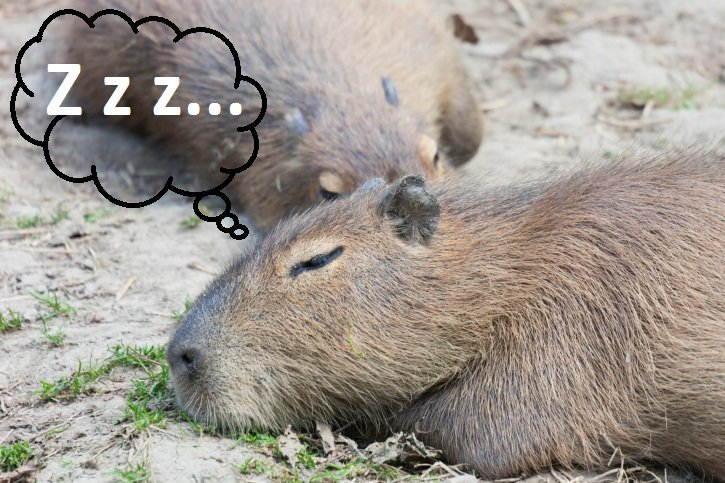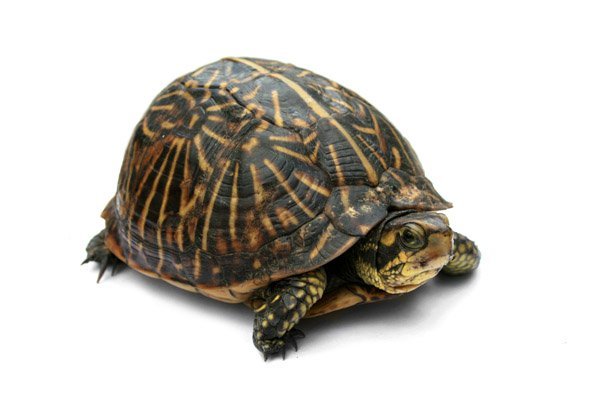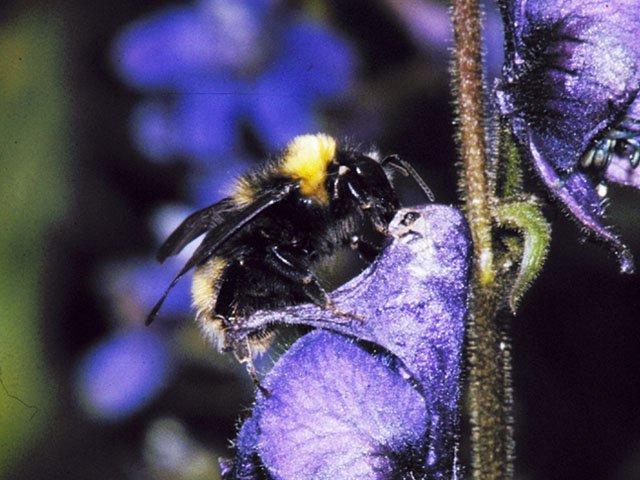As the weather gets colder you might find it hard to wake up in the morning, but don’t worry you aren’t the only one. In fact there are some animals that, no matter how loud their parents may yell, don’t get up at all, choosing instead to stay asleep all winter!
Hibernating the weather away
 When the environment becomes too hostile for an animal, they have to find a way to cope. Some animals migrate out of the area while others enter an inactive state, which they stay in until conditions suit them better. If this inactive state lasts for a long time during the winter, it is called hibernation, but if it is in a hot climate, it is called estivation. We’ve gathered up ten of the coolest true hibernators and some seasonal deep sleepers like bears in this top ten list.
When the environment becomes too hostile for an animal, they have to find a way to cope. Some animals migrate out of the area while others enter an inactive state, which they stay in until conditions suit them better. If this inactive state lasts for a long time during the winter, it is called hibernation, but if it is in a hot climate, it is called estivation. We’ve gathered up ten of the coolest true hibernators and some seasonal deep sleepers like bears in this top ten list.
Be sure to leave a comment to tell us which hibernator is your favourite!
Alpine Marmots (Marmota marmota)

Marmots hibernate for up to eight months! They spend the four months they are awake having babies and preparing for the next hibernation. During hibernation they take only 2-3 breaths a minute and their heartbeat slows down from their normal 120 beats to 3-4 beats a minute!
Common Poorwill (Phalaenoptilus nuttallii)

It isn’t often that you hear about a bird that sleeps the bad weather away, that’s because the Common Poorwill is the only known bird species to hibernate. It picks a spot under shallow rocks or rotten logs and stays there for up to five months. Its daily energy needs drop by 93% and it can stay asleep for 100 days! Once hibernation is over, it needs seven hours to get back to its normal temperature.
Bears

Only four species of bear are hibernators: American Black Bear, Asiatic Black bear, Brown bear and Polar bear. These furry mammals don’t hibernate in the true sense because their body temperature only drops a little bit and they can wakeup at any moment. In fact, a pregnant mama bear will have her cubs during the hibernation period. Like true hibernators, the bear’s heartbeat will slow down and they can go for a long time without having any food. During hibernation a Black bear’s heart can drop from 40-50 to 8 beats per minute and they can last as long as 100 days without eating or drinking!
Bats

When bats are left alone, they can be some of the longest hibernators. In the wild, big brown bats have spent 64-66 days in hibernation while in captivity one lasted an incredible 344 days! These little guys don’t have to eat but they do wake up to drink. Their heart rate drops from 1000 beats per minute to only 25 and some bats only take a breath every 2 hours.
Fat-Tailed Dwarf Lemurs (Cheirogaleus medius)

Fat-Tailed Dwarf Lemurs live in Madagascar where temperatures in June and July usually stay about 30 degrees C. Now that might seem pretty warm to you, but this is actually the coldest time of the year for these lemurs. During this cold spell Fat-tailed Dwarf Lemurs pick a tree and settle there for about seven months until the rains return in November and food is available again. During their hibernation, they live off the fat in their tail (hence fat-tailed) losing close to 50% of their body weight!
Common Box Turtle (Terrapene carolina)

Hibernating box turtles are found in well hidden spots around Southern North America (USA and Mexico). The length of their winter sleep depends on the location and turtle subspecies: some can last as short as 77 days or as long as 154 days. Their heart beat drops to just one every 5-10 minutes and they don’t have to breathe in air at all (although they do take in oxygen through their skin). They are still very sensitive to the changing environment around them, if they wake up too early they will likely not survive.
Bumblebees

When the temperature drops, males and worker bees die off but the queen survives by hibernating. She hibernates in a hole in the soil, in rotten tree stumps or under leaf litter. She will emerge 6-8 months later, warm-up and then find a nice spot to build a nest and create a whole new team of bees.
Garter snake

Unlike the bumblebee queen, who hibernates alone, garter snakes hibernate in groups. In Canada, where winters are exceptionally cold, there can be hundreds and sometime thousands of snakes grouped together for warmth. Once spring arrives and the snow melts, they head out of their winter homes to bask in the sun. It’s quite a sight to see!
Hedgehog

Hedgehogs are some of the deepest hibernators around. Some can sleep through the whole winter! Their body temperature drops and they breathe so little that it can hardly be seen. They have special cells that release heat 20 times faster than white cells. If temperatures drop too low, their heart beat picks up to produce more heat, which wakes them up briefly before they fall asleep again.
Snail

Snails have a built in bed for their hibernation. They go into their shell, close up the hole with a skin made of chalk and slime that keeps the moisture in. During this time, they use almost no energy and don’t have to eat anything at all. In some areas where there is little rain, snails can hibernate for years!
If you think animals are amazing, the Earth Rangers Podcast is for you!
Join Earth Ranger Emma as she travels the world on a quest to solve some of nature’s greatest mysteries! With top ten countdowns, animal guessing games and epic animal showdowns, this is a journey you won’t want to miss!
References
Clive Roots, Hibernation. Page 127-128
https://eol.org/pages/45509468
Mark Carwardine, Animal Records. New York, NY: Sterling Publishing Company, Inc., 2008
http://www.pbs.org/wgbh/nova/nature/bear-essentials-of-hibernation.html
Terry A. Vaughan, James M. Ryan, Nicholas J. Czaplewski. Mammology, Jones & Bartlett Learning, 2011
http://www.nature.com/nature/journal/v429/n6994/abs/429825a.html
Carl H. Ernst, Jeffrey E. Lovich. Turtles of the United States and Canada. JHU Press, 2009
William H. Robinson. Handbook of urban insects and arachnids. Cambridge University Press, 2005
Joanna Burger. Whispers in the pines. Rutgers University Press, 2006-03-20
Maurice Burton, Robert Burton. The international wildlife encyclopedia. Marshall Cavendish, 1970
Mark Fox. Discovering night creatures. Curriculum Press, 2002
Andrew Hipp. The life cycle of a snail. The Rosen Publishing Group, 2002: Page 18

I love the snail
Brown bear
The common poorwill looks like a pinecone
Yeah
The hedgehog is sooooooo cute
Wellllll I clicked here because there was a bear on the thumbnail so thanks for claraflying that up for me!
They are all so cute! I didn’t know bumblebees hibernated!
I did not know only four species of bears hibernate!
There are so many garter snakes!
This was really interesting and cool!
All of them!